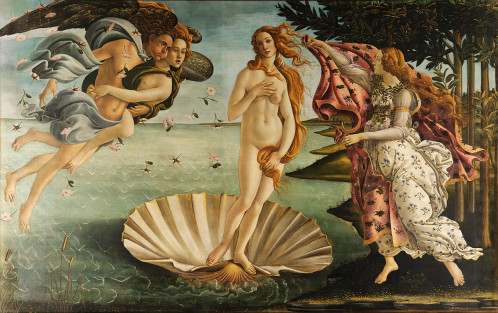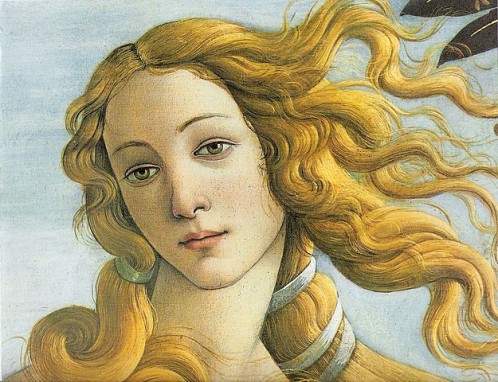Sandro Botticelli
‚The Birth of Venus‘
Key pieces series
This week Key Piece goes back to the 15th century with the emblematic The Birth of Venus by Italian Renaissance master Sandro Botticelli.
1. The Birth of Venus was painted in a tempera technique around 1485 in Florence.
2. It is the first big scale painting created during the Renaissance measuring 1,75 x 2,18 m.
3. It is an allegory of Venus, the Goddess of Beauty, coming out of the water.
4. Venus is surrounded by Zephyr, the mild west wind blowing on her as well as the four elements, earth, water, air and fire.
5. The myth of The Birth of Venus is related to Hesiod in his Theogony.
6. The model of the Venus is Simonetta Vespucci, the mistress of Florentine political leader Giuliano de Medici, who was elected the most beautiful woman of her era.
7. The posture of the Venus recalls the Venus de Medici, a classical sculpture from the Antiquity belonging to the Medici House.
8. It is one of the first reintroduction of nude depiction within the religious panorama of the Renaissance and to avoid censure Botticelli enveloped the Venus’s breast with her hair.
9. The painting was acquired by the Medici House and was first displayed at the Castello of Pierfrancesco de Medici before joining the Uffizi in Firenze, place where it can still be admired today.
10. The Venus of Botticelli has been celebrated many times in contemporary culture. It is namely represented on the Italian 10 euro cents, was cited in Arthur Rimbaud’s poetry and was the main inspiration for Lady Gaga’s ARTPOP album cover.

Sandro Botticelli, The Birth of Venus, Tempera on canvas, 1485.

Sandro Botticelli, Detail of The Birth of Venus, Tempera on canvas, 1485.
Archive
- Dezember 2016 (1)
- Oktober 2016 (3)
- September 2016 (24)
- Juli 2016 (20)
- Juni 2016 (24)
- Mai 2016 (18)
- April 2016 (18)
- März 2016 (21)
- Februar 2016 (11)
- Januar 2016 (20)
- Dezember 2015 (20)
- November 2015 (37)
- Oktober 2015 (30)
- September 2015 (24)
- August 2015 (4)
- Juli 2015 (30)
- Juni 2015 (9)
- Mai 2015 (17)
- April 2015 (23)
- März 2015 (18)
- Januar 2015 (8)
- Dezember 2014 (1)
- November 2014 (3)
- Oktober 2014 (10)
- September 2014 (4)
- August 2014 (2)
- Juli 2014 (3)
- Juni 2014 (2)
- Mai 2014 (5)
- April 2014 (11)
- März 2014 (12)
- Februar 2014 (13)
- Januar 2014 (10)
- Dezember 2013 (5)
- November 2013 (13)
- Oktober 2013 (24)
- September 2013 (18)
- August 2013 (26)
- Juli 2013 (13)
- Juni 2013 (35)
- Mai 2013 (44)
- April 2013 (49)
- März 2013 (61)
- Februar 2013 (54)
- Januar 2013 (46)
- Dezember 2012 (50)
- November 2012 (58)
- Oktober 2012 (62)
- September 2012 (61)
- August 2012 (63)
- Juli 2012 (64)
- Juni 2012 (61)
- Mai 2012 (63)
- April 2012 (51)
- März 2012 (67)
- Februar 2012 (37)



